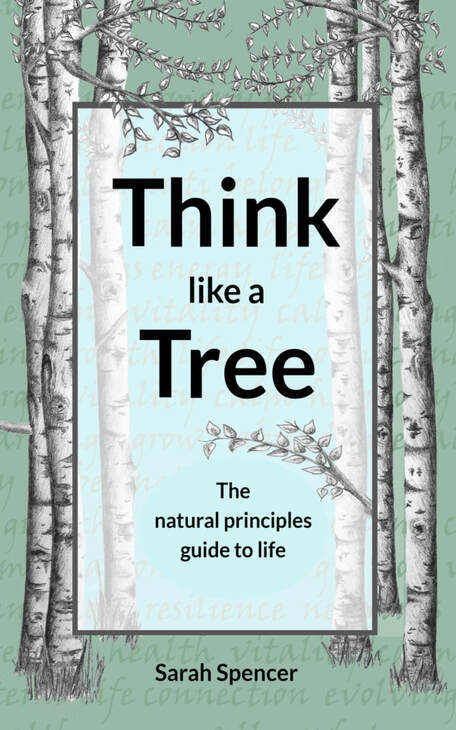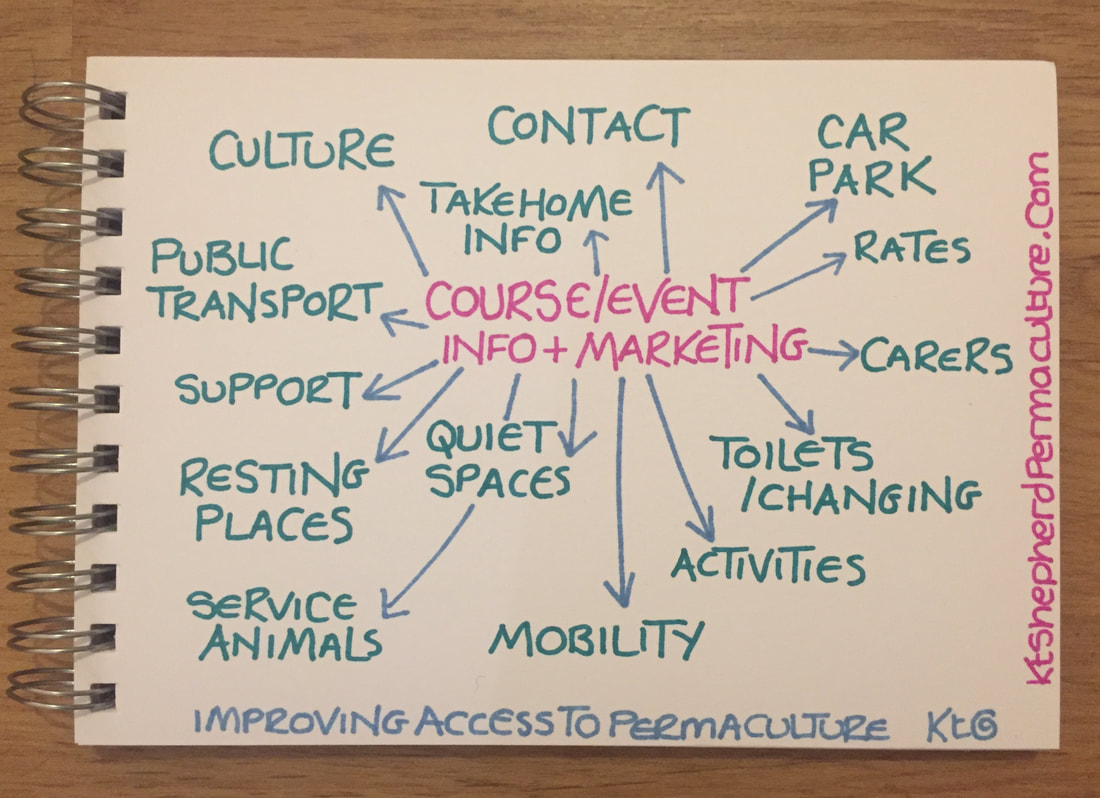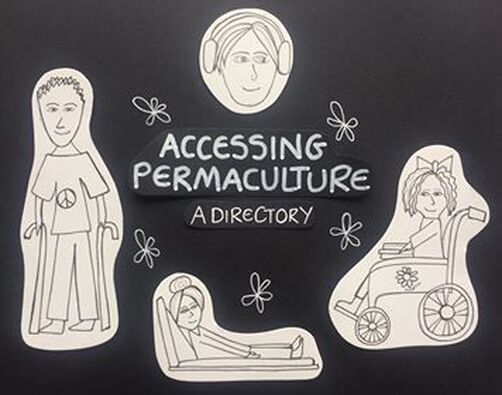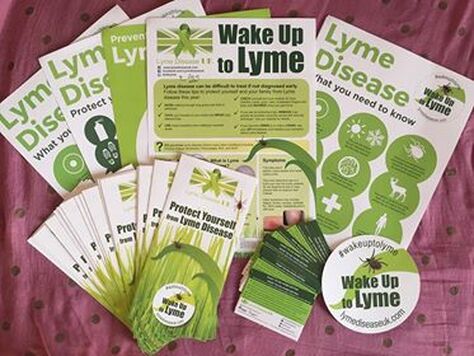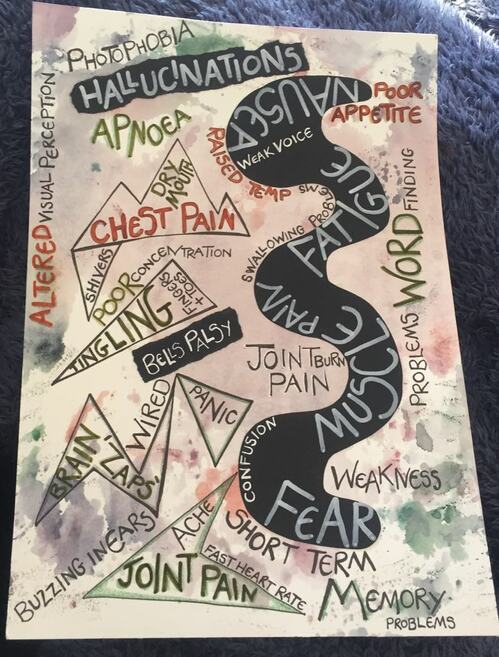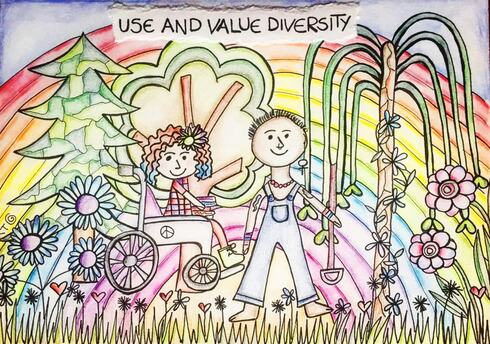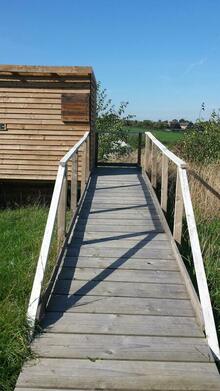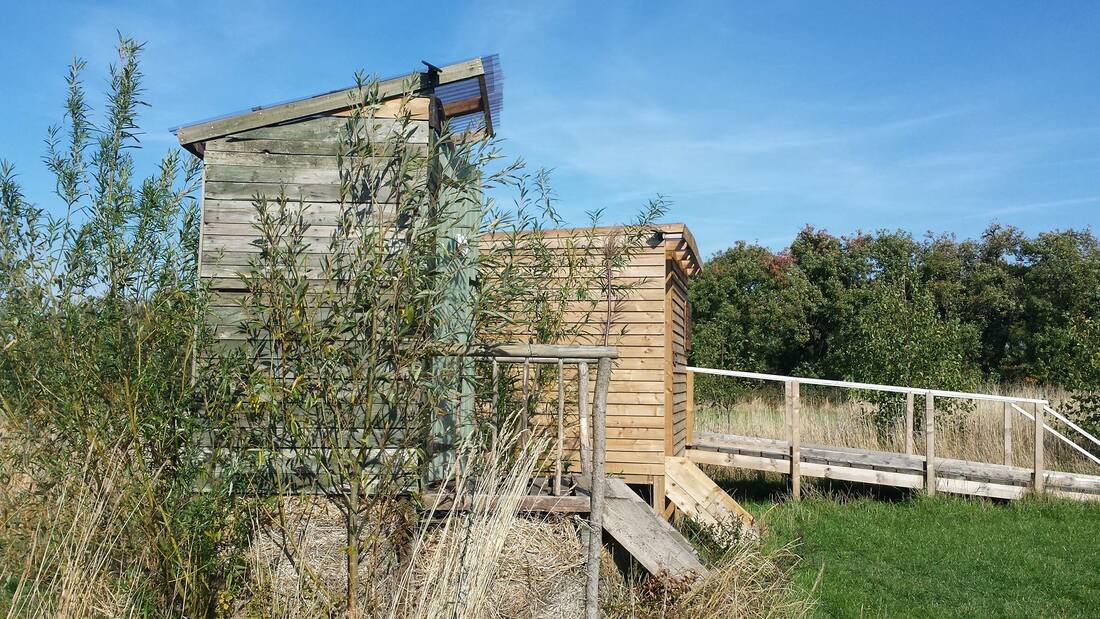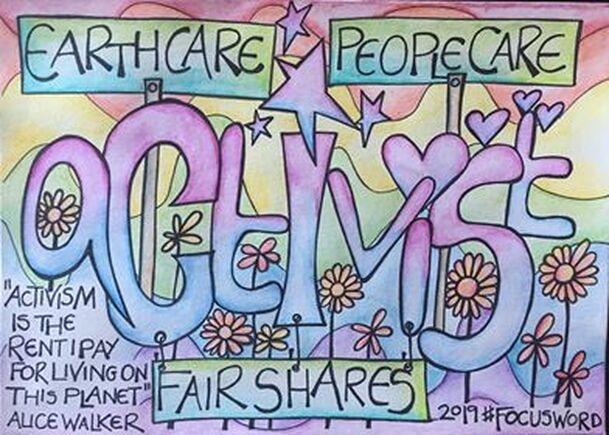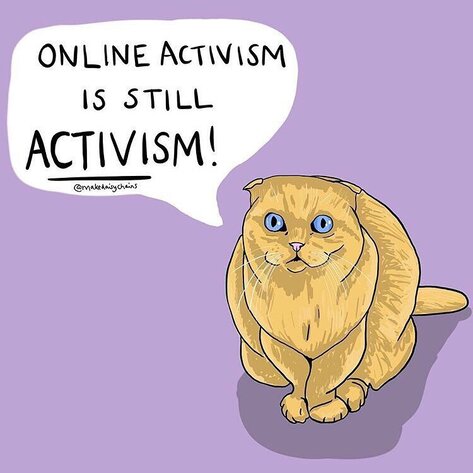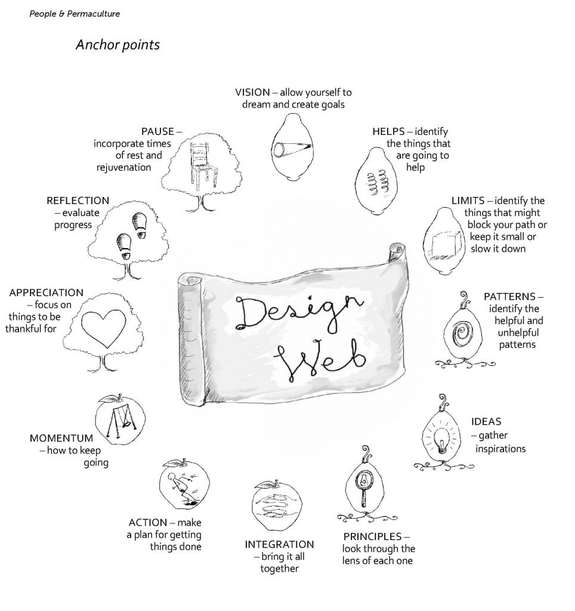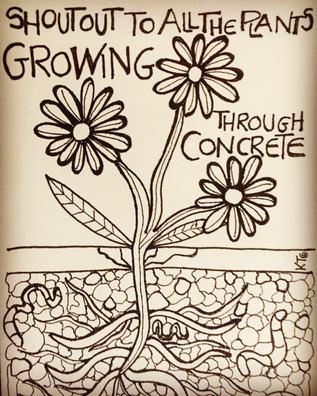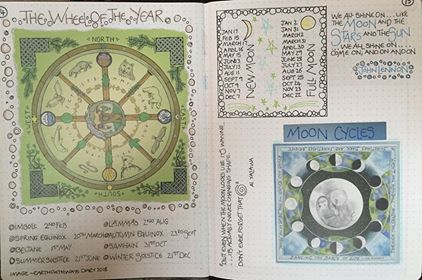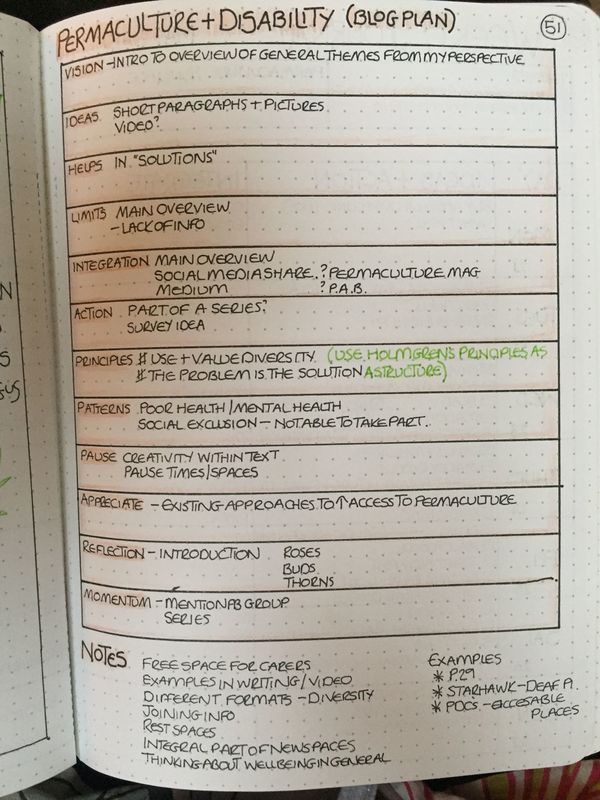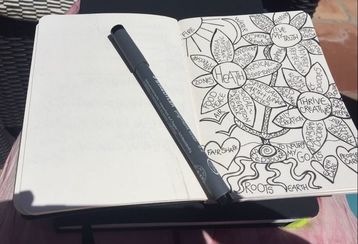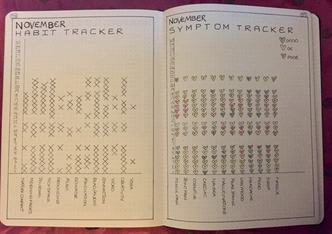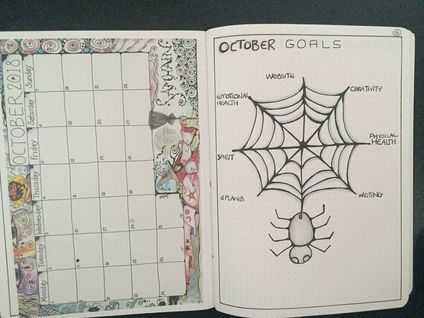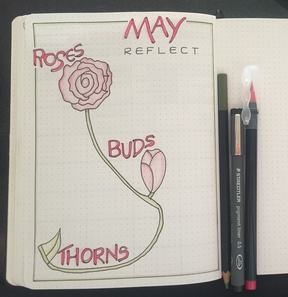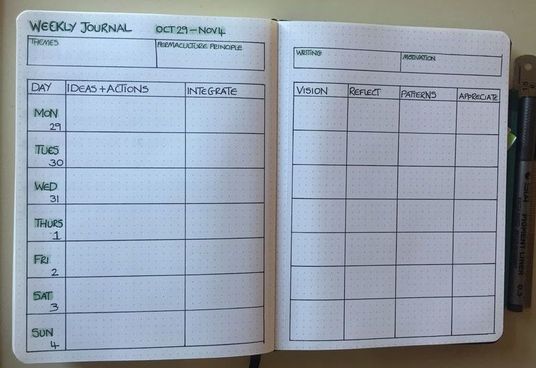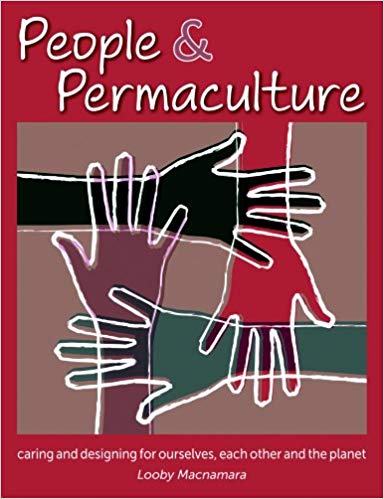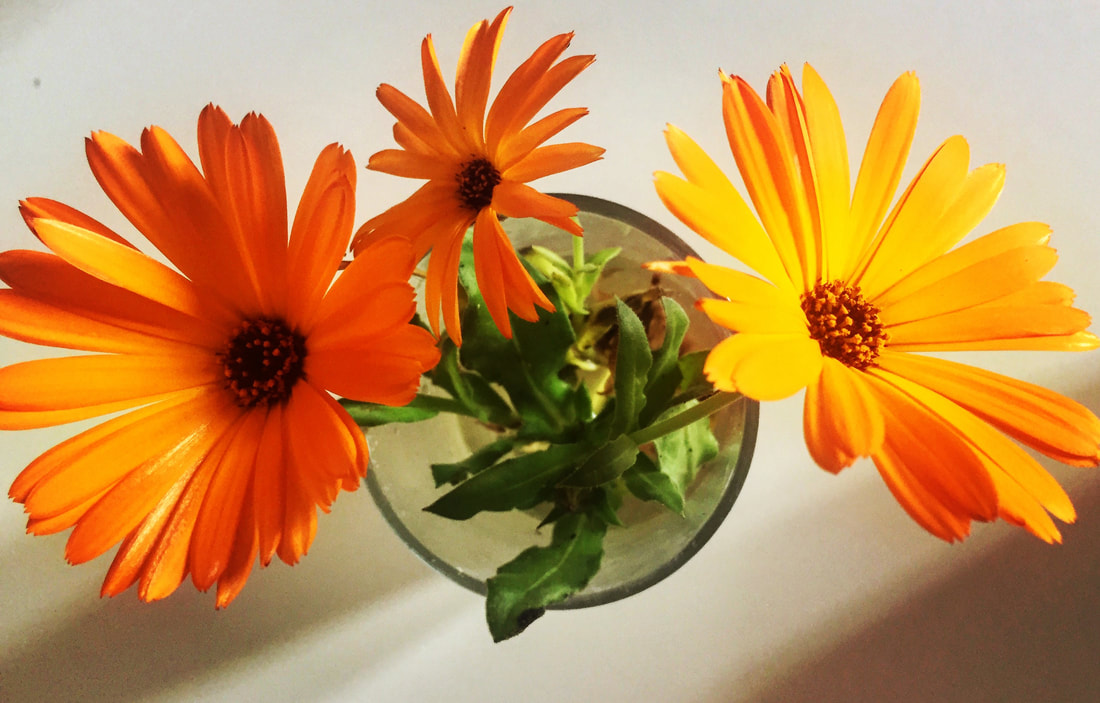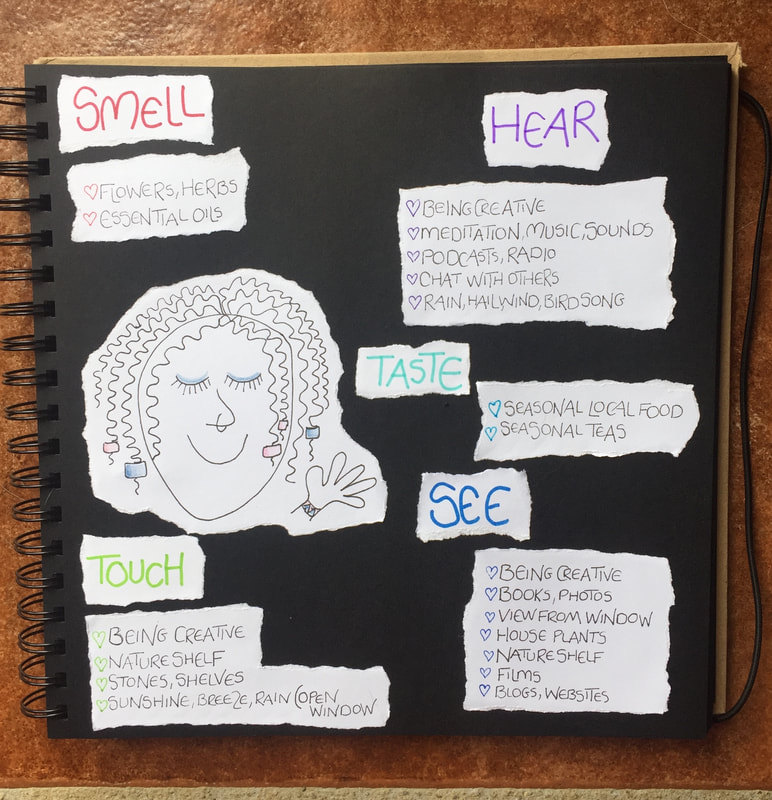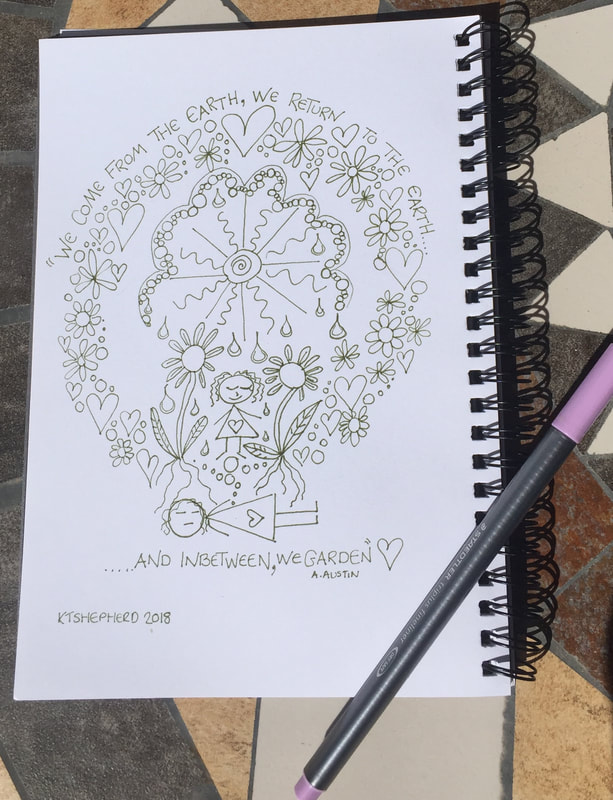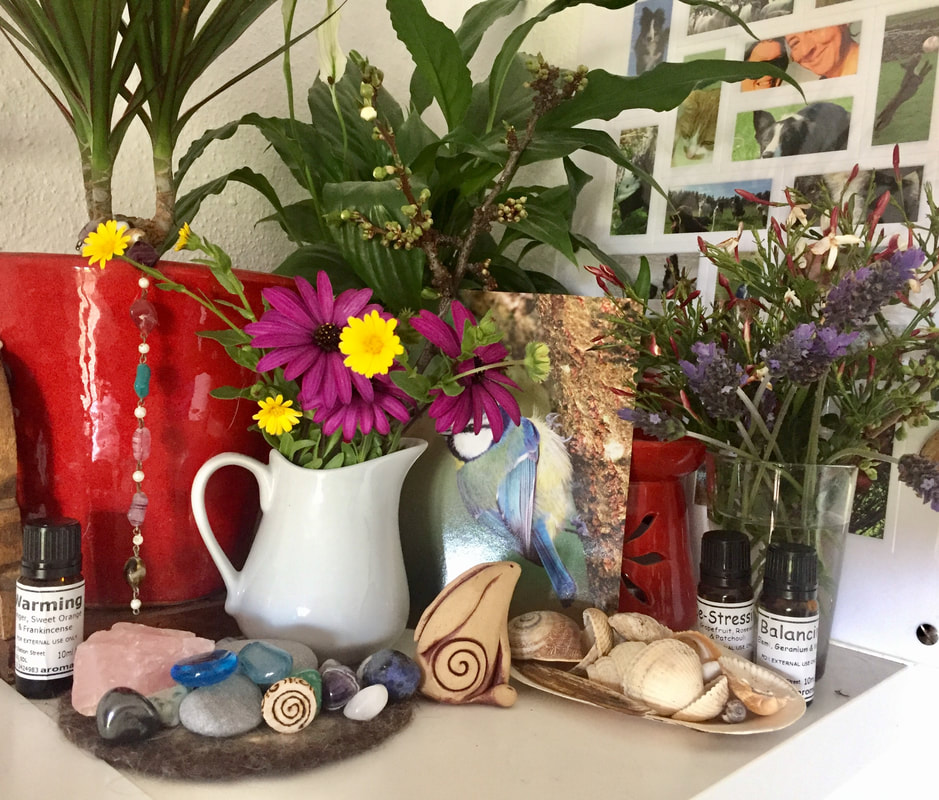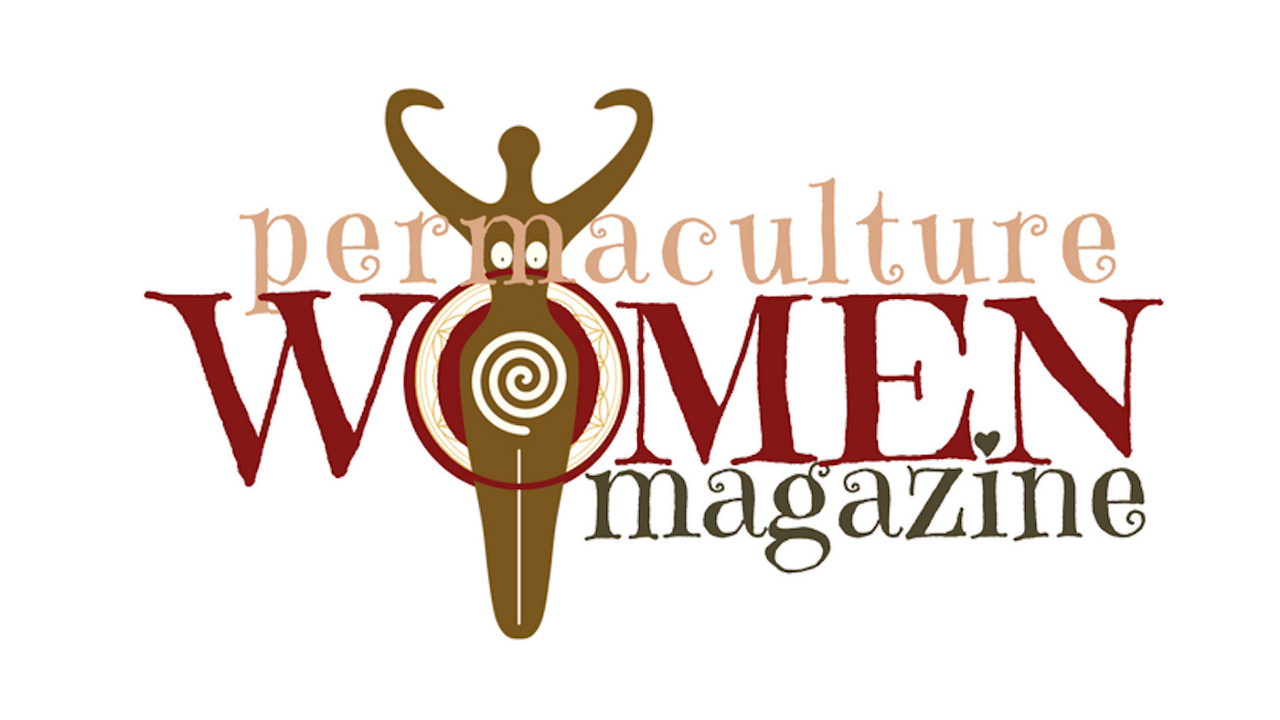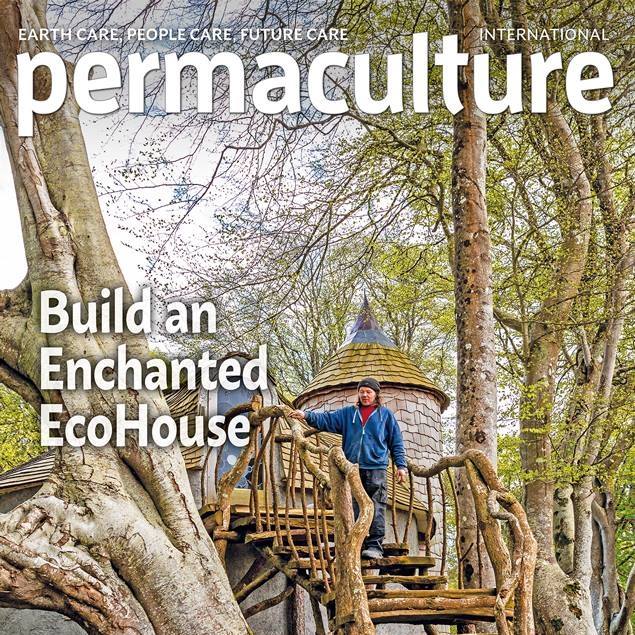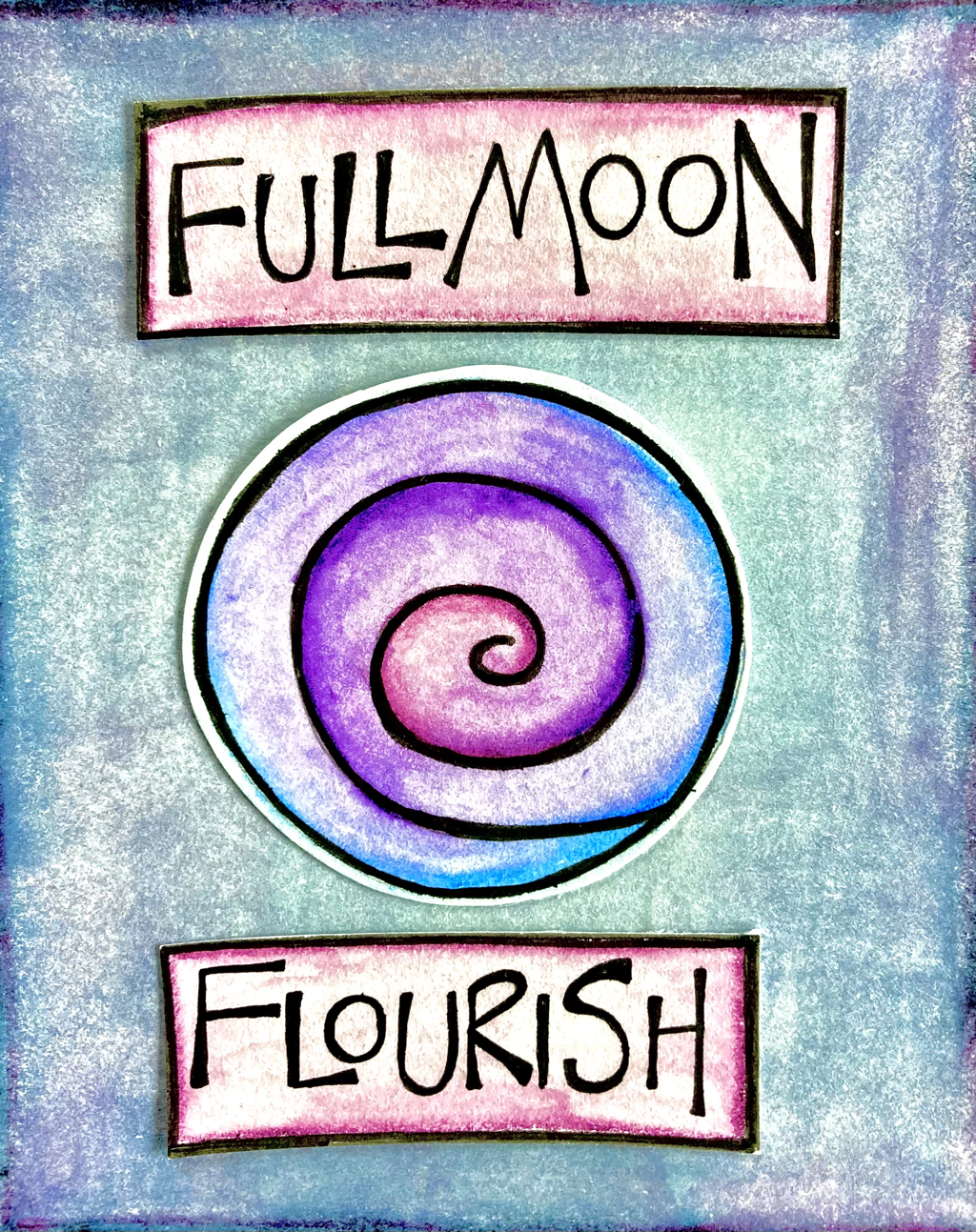Book ReviewHaving followed the journey of Sarah Spencer’s course, workshops and training about using principles from nature, tress specifically, to navigate and thrive in our lives, I was really excited when I found out that she was also writing a book about the same topic. And I’ve not been disappointed. Think Like a Tree, the book, is a beautiful and incredibly informative tool for us all.
The 42 short chapters are brimming with examples of trees from many parts of Earth, alongside every day case studies and ideas of how the nature principles taught to us by the presence of trees, can positively impact on our lives as individuals and within our communities. Each chapter covering one principle, are divided into 6 Groups – Observation, Purpose, Surroundings, Connection, Resilience, Future. There is a lot of information for each principle, as well as some really thought provoking exercises to undertake. I really enjoyed reading about 1 principle each evening and I can recommend this approach in order to take time to absorb and reflect on the details presented. Sarah’s work with Think Like a Tree has been very much linked to her life through living as well as possible with Chronic Illness. This theme is evident throughout the book and means that Think Like a Tree could be particularly useful to others in similar situations. Sarah claims that “Nature holds the secret to your happiness, health and wellbeing - Think Like a Tree guides you to discover your own personal route to happiness, health, success and fulfilment – whatever your circumstances” – and I agree that this part ecology, part sociology, part history and part self coaching tool lends itself to being a useful and meaningful book for a diverse audience. Think Like a Tree can be bought directly from Sarah at https://www.thinklikeatree.co.uk/product/think-like-a-tree-book/
0 Comments
Some guidelines for Permaculture event information and marketing, for improving access to Permaculture for people with chronic illness and/or disability, and people who are neurodivergent.
This post is also available as a PDF here Earlier this year I published an article on my blog - Accessing Permaculture for people with chronic illness and/or disability - positives, challenges and suggestions for a more inclusive permaculture. In this short post I share some suggestions, from the linked post, of information to include in general Permaculture Course and Event descriptions and marketing. This in turn will then help more people with chronic illness and/or disability and neurodivergent people to access and then utilise Permaculture Design This list isn’t meant to be prescriptive and it isn’t exhaustive. It’s been compiled from the stories, voices and ideas of people who responded to my request for information, for my initial article linked above.
Please feel free to use this information in your own work or to contact me with any feedback, ideas or questions. For discussion about some of the issues identified, join the Permaculture, Chronic Illness, Neurodiversity and Disability Facebook Group I'm starting to put together a directory of permaculture projects in the UK, (demonstration sites, courses, events, other permaculture services), where issues of access for people with chronic illnesses, disabilities and/or neurodiversity, are included as part of the project design.
Does your permaculture demonstration site , course, event or other permaculture service, actively encourage the participation and connection of people with chronic illness, disabilities and/or neurodiversity? If so and you would like to feature in this developing online resource, please email me [email protected] and I will send you a short questionnaire to complete. For more information about accessing permaculture for people with chronic illness and disabilities click here For a list of top tips about how to improve access to permaculture for people with chronic illness and disabilities click here To connect with discussions about these topics and more, feel free to join the Facebook Group Permaculture, Chronic Illness, Neurodiversity and Disability Lyme disease is a bacterial infection that can be spread to humans by infected ticks. It's usually easier to treat if it's diagnosed early. Not all ticks carry Lyme disease, but the numbers of those who do, are thought to be rising, in a response to Climate Change. Lyme disease is caused by Borrelia, a spirochete bacteria. It’s the most common tick-borne disease in the northern hemisphere and there are multiple strains of the bacteria. Lyme disease is endemic in many parts of the United Kingdom, particularly in woodland or heath-land areas but disease carrying ticks can also be found in cities and gardens. Lyme disease not treated immediately, or not treated according to 2018 NICE (NHS) guidelines, can result in long term severely disabling illness, which is nearly always much more difficult and sometimes impossible to fully treat. Comprehensive information about Lyme disease prevention, detection and treatment can be found on the Lyme Disease UK website.
Given that most permaculture demonstration sites and events are based at least partially outdoors, it's essential that folk facilitating and attending these projects and events are aware about preventing tick bites, and then being able to identify early signs of possible Lyme Disease infection, alongside accessing prompt medical intervention. Lyme Disease UK produce an excellent (free) awareness pack which includes both posters to display and leaflets and "essential info" cards designed to be given away for individual use. I urge anyone organising and facilitating outdoor permaculture events to send off for these packs to generate increased awareness of Lyme disease for people attending their projects and events. You can send off for a Lyme disease awareness pack via the link below Lyme Disease UK Awareness Packs I will be posting more about Lyme Disease from my social media spaces throughout Lyme Disease Awareness Month in May . Feel free to connect with me on Facebook , Instagram and Twitter . You can also sign up to my newsletter for monthly updates about my creative permaculture projects, plus links to inspiring work from other women in permaculture. Top tips for permaculture events/courses facilitators and permaculture demonstration sites 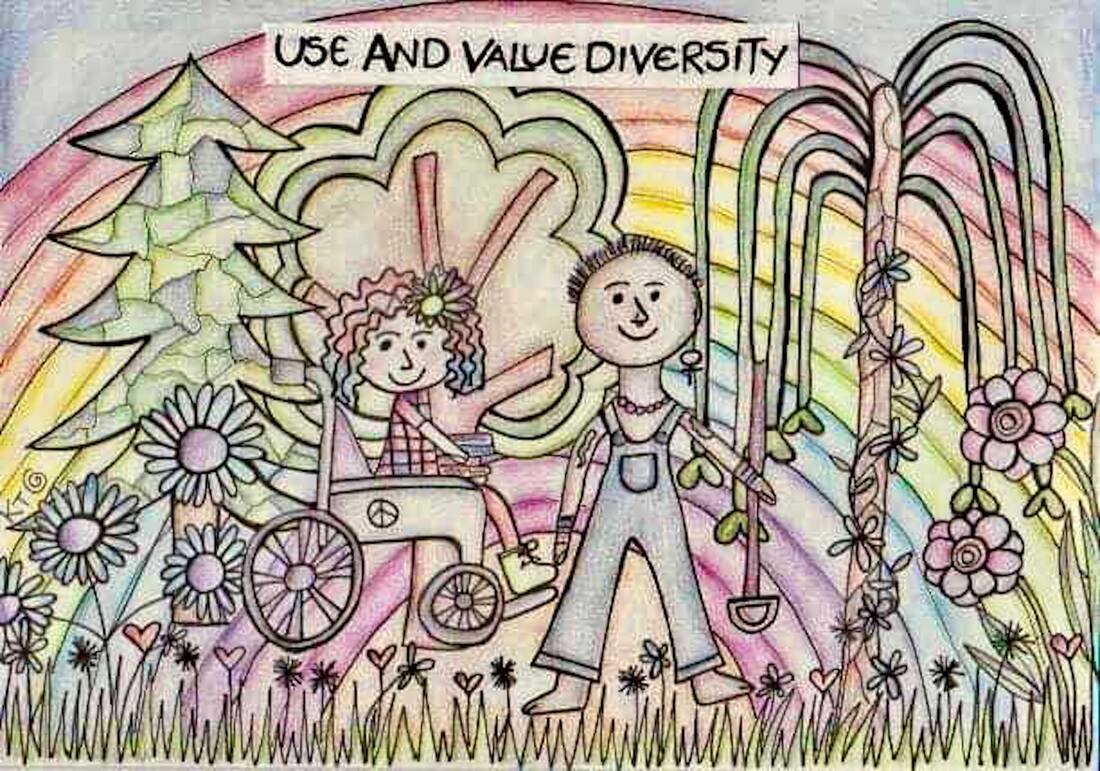 Kt Shepherd Illustrations Kt Shepherd Illustrations In February of this year I published an article on my blog - Accessing Permaculture for people with chronic illness and/or disability - positives, challenges and suggestions for a more inclusive permaculture. In this post I share the "top tips" for permaculture events/courses facilitators and permaculture demonstration sites, arising from the article. (These top tips are also available as a PDF here)
- positives, challenges and suggestions for a more inclusive permaculture(This blog post is also available as a PDF here ) (Mainly UK-focused, though many aspects applicable to other countries too.) Since becoming very unwell and disabled nearly two years ago, I have learnt very quickly about what it means to be a person with disabilities attempting to navigate everyday life – and within that life, being unable to access many of the things I had previously taken for granted. Given that permaculture knowledge, experience, events and demonstration sites were previously a big part of my life, I have become increasingly aware of how difficult it would be for me to now access many of these things; in some cases it would be impossible. If I can’t participate in these events that are so important in my life, I wondered how many other people are also struggling to engage and connect with permaculture because of chronic illness and/or disability. As I started thinking about this in more depth, I set up a Facebook group with the intention of connecting with other people in the permaculture community with chronic illness and/or disability. (CI/D). (Recently, after some discussion in the Facebook group, it was decided that it made sense to add “neurodiversity” to the name and themes of the group too. The topic of neurodiversity inclusion isn’t discussed in this article, as the decision to add neurodiversity to the subject content in the Facebook group was made once I had started writing this post up. Many of the issues mentioned here – though not all of them – will also be relevant to neurodivergent people) If at this point you need more information about the definitions of chronic illness and disability then please see the links shared in "Designing Solutions", further on in this article. In addition to setting up the group, I went on to openly ask some questions about accessing permaculture for people with CI/D in several UK focused Facebook groups about permaculture and also via a post on the Permaculture Association (Britain) online noticeboard. People were invited to respond to the following questions, either in public in the group or by emailing me. In total, 47 people (mainly from the UK) responded in one of these ways. The aim of this information-gathering was to access reflections on experiences; it was a place to start a conversation rather than to undertake a structured research project. Here are the summaries and direct (anonymous) quotes of the responses to each question. (This article is quite lengthy, as I wanted to be able to include the voices of as many people as possible.) 1) Do you identify as having a chronic illness and/or disability? A diverse range of chronic illnesses and/or disabilities were included in the response to this question. These included physical illnesses, mental illnesses, learning disabilities (including dyslexia) and physical disabilities. Several people were keen to include neurodiversity as a disability too, as they pointed out that the education and benefits systems in the UK treat it as such. Many people also said that their illness and/or disability was a ‘hidden’ one, meaning that other people couldn’t immediately tell if the person with the chronic illness and/or disability had extra needs. A common theme evolved around many people feeling disabled by their environment, which frequently does not allow differently abled people to participate in life as they need to or would like to. Anyone has the potential to have additional needs and people with chronic illness and/or disability should be accepted to self define this, and not judged by others in doing so. Some people who responded didn’t identify as having a CI/D, though they had witnessed the experiences of people with CI/D accessing permaculture events and demonstration sites. 2) Do you have examples of where accessing permaculture knowledge, demonstration sites and events have been adapted to the needs of someone with a chronic illness and/or disability? This might be your own needs, or someone else you have observed being supported well. Several people mentioned great examples of how their needs relating to CI/D had been met at a variety of permaculture events and sites. These included:
There were also a couple of examples of places that had easily accessible compost toilets. Some statements made were:
3) Have you, or anybody else you have witnessed, been unable to access permaculture knowledge and/or demonstration sites and/or events because of your chronic illness and/or disability? Some statements that reflect general themes were:
The attitudes of other people Many people have health conditions where their symptoms are variable. Some found that the lack of understanding about this meant that they felt uncomfortable and judged if they couldn’t join in with an activity when the previous day they had been able to. Some examples given were:
Physical space
Event activities
4) What changes could be made in order for you, or other people with chronic illness and/or disability, to be able to further access permaculture knowledge and/or demonstration sites and/or events? General themes One very common theme emerging from the reflections people shared with me is that permaculture should be about designing systems that showcase inclusivity.
Attitudes
Physical space
Activities
Designing solutions Although every person with CI/D is an individual with unique experiences and needs, there are some common symptoms, issues and requirements for many folk. The following easily accessible resources are some favourites of mine, and can help you to understand more about these. The Mighty – online community of support and awareness raising about disability, disease and mental health. Stickman Communications – communicating about disability with style and humour Chronic Illness Inclusion Project Permaculture, Chronic Illness, Neurodiversity and Disability Facebook group Suggestions to improve access to permaculture knowledge, events and demonstration sites in general in the permaculture community/movement (These suggestions are also available as a PDF here )
Top tips for permaculture events/courses facilitators and permaculture demonstration sites (These top tips are also available as a PDF here)
This article and its suggestions have been designed to act as a starting point for further discussions and design work around access to permaculture for people with chronic illness and/or disability. Over the next few weeks, I will also be recording a spoken-voice version of the article content for my planned YouTube channel. I openly welcome feedback and /or suggestions for further blog posts/articles. Feel free to contact me by email or via my social media platforms.
One of the life tools I like to create at the start of a calendar year is choosing a focus word for that year. I create some art or craft work at the end of December or start of January, which goes on to become my daily reminder about my focus word and the energy behind it. It's a tool that has worked really well for me for several years now, no matter what is going on in my life at the time. My focus word for 2018 was "Creativity" - and when I chose this word in the January, I had no idea that the daily doodling I did, and shared on social media to help my emotional and cognitive wellbeing, would evolve into requests for Illustration work for prints, books and online courses by the start of 2019! While I'm sure this didn't just happen because of my chosen word, it certainly helped me to regularly connect with the intention behind it. So this year I have chosen "Activist", Activism is defined by the Cambridge Dictionary as, "the use of direct and noticeable action to achieve a result, usually a political or social one." Throughout my life I have nearly always been involved in various types of activism about issues close to my heart and spirit. Over the past decade this has very much been connected to my development as a permaculture practitioner and educator. I'm hoping that choosing this word as my focus in the coming months, will enable me to design my new form of activism, as part of my plan to continue to thrive while being unwell with Lyme Disease. Over the last year I have been following the work of illustrator and online Mental Health Activist, Make Daisy Chains and also the Craftivism movement, especially the work of the Craftivism Collective Both of these are part of my inspiration for these first weeks of the year as I begin to design the early part of the journey, my focus word for 2019 will take. Im hoping to use the Wheel of the Year, Earth based festivals for times of reflection about my current permaculture projects, and how these are influenced by my new focus word. I plan to document the main topics of that reflective process, within future blog posts here.
Using Permaculture To Create A New Planner & Reflection ToolAs part of my portfolio of designs for my Diploma in Applied Permaculture Design, one of my favourite design created was a Reflection and Planner Journal , (This link isnt accesible on a mobile phone). This tool totally changed the way that I achieved the goals and intentions I set in my life and work. I have used versions of this design ever since. I also know that several friends have also used their own versions of the tool as well, with really positive feedback. One thing I found when I first became very unwell and unable to work, last year, was that my Reflection and Planner Journal no longer felt as useful. The large spaces to fill on the pages, plus some of the content, was a constant reminder about how much my life had adversely changed through my illness. In addition the A4 size paper was becoming more and more difficult to physically manage to use as my movement, even when resting in bed, was very limited. So I set about on a redesign! - I wanted one easily accessible place where I could record plans, ideas, reflections and resources ,using a variety of creative ways of documenting. A friend had introduced me to the concept of Bullet Journaling several months before and I’d been considering it as something that I could well adapt to suite my own needs. Many commercially produced 'Dot Journals' typically used in bullet journaling, are A5 size, which means much easier accessibility in relation to my health needs. The Design WebI’m a keen fan of Looby Macnamara’s 'Design Web'- the Design Process at the core of her book People and Permaculture, for anything related to using permaculture design as a way of improving our own lives. So it was an obvious choice for me to use the Design Web to guide the design of my new Planner & Reflection Tool. First of all, I decided to name my new Planner and Reflection Tool a 'Seed Journal' – a space to vision and record ideas, observations and reflections, many of which could become actual projects and designs, if, or when the conditions were optimal for them to germinate and grow. I purchased an A5 Dot Journal to try for the first time. (There are many different brands of these journals available. Purchasing one from a stationary shop local to you if at all possible, rather than from big multinationals, will obviously keep more money in your local community. ) Here is a summary of how I have used, (and sometimes creatively adapted), various Anchor Points from the Design Web as a core part of my Seed Journal Tool. Seed Journal OverviewIdeas & ActionsProject Pages - Examples of these in my Seed Journal are :- Design pages, (a space to document information relating to a specific design); Blog post ideas; Lunar & Solar Cycles; Social media planning; Learning notes about a particular topic; Budgeting; Log of useful resources; Mindmap of project ideas for next year. PauseThis Anchor Point for me is a reminder about how important creativity is in my life. And each week I try and engage in some artwork that is just for the sole purpose of taking a break, often I will listen to some relaxing meditation music at the same time, and then I glue the creative piece into my Seed Journal. Each MonthPatternsI use this Anchor Point to focus on recording daily activities that are important to me, and symptoms of my illness. It’s a really useful way to look at the patterns and connections between them, then making changes for the next month as suggestions and solutions emerge. VisionI find spending time on indepth visioning for the month ahead, a creative and inspiring way to design beyond the edges of my comfort zone, as well as considering aspects of my life and work that may of had very little attention recently. I use a mix of Mother Peace Tarot Cards, various decks of Oracle cards, Gaia Craft Permaculture Principle Cards and Group Works Cards. Goals &/or IntentionsActually not an Anchor Point in the Design Web, but nearly always part of a permaculture design. I like to use the SMART acronym for goal setting . This link is a great one for expanding on the typical: - Specific; Measurable; Achievable; Measurable; Time bound. The monthly overview in this image above is collaged from the wonderful Earth Pathways Diary Ideas & ActionsI have a page each month where I can literally write down ideas as they come into my head. Then at the start of each week I consider how they might fit into the days ahead, or possible connections with project pages in my Seed Journal ReflectionAt the end of each month I spend dedicated time on reflecting how the month has gone, and link to my goals and patterns for the month. I like using Roses, Buds and Thorns reflection tool here, but it's also a great opportunity to try out some of the others too, for example PMI (Pluses Minuses, Interesting) or SWOC (Strengths Weaknesses Opportunities Constraints). Weekly & Daily JournalThe LayoutThe small spaces in this layout work really well for me. Enough room to document, without too much space to feel overwhelmed about filling it! It takes me about 10 minutes to draw this out each week. It can be a good opportunity for thinking about intentions for the week ahead. ThemesNot officially part of the Design Web, but an additional section I use to capture the general overview of the week, for example, significant moon phases, festivals, celebrations or other important times. Permaculture PrinciplesAs part of my ongoing learning and growing as a permaculture practitioner I like to focus on a particular Permaculture Principle each week, and spend time throughout the week reflecting on how this principle can be used in the different areas of my own life, community (online and face to face), and globally. It can be a useful focus for me when I am not well enough to engage in much physical activity, (I have called this my ‘structured daydreaming’ tool, a redefinition of 'not feeling well enough to do anything'). Sometimes I journal about my thoughts relating to principles, especially if it seems like it would be a good reflection to ‘capture’ for future projects. And on other occasions, I choose a permaculture principle I know is going to be a useful one for specific plans for the week. At other times I use the wonderful Gaia Craft Permaculture Principle Cards to inspire me. Momentum/MotivationI use this space to document a particular quote, poem, song lyrics or anything else that resonates with me at this time. Reminding myself about it each day really helps to ingrain its meaning and connection for me in my life. Ideas & ActionsI use these Anchor Points together. This space is for ideas for action throughout the day, plus a log of other actions that occurred without plan, throughout the day. IntegratePeople I want/need to connect with during that day. And then at the end of the day, additional people who I connected with. VisionI really like using tarot and oracle cards as part of my daily routine, to inspire and perhaps encourage thinking and reflecting outside of my comfort zone. I briefly record these reflections here. ReflectI use the Roses Thorns and Buds reflection tool to do a mini-reflection for each day. ProjectsNot an Anchor Point in the Design Web – but I find it useful to have a separate section to be clear about which permaculture projects I am focusing on each day/week. AppreciationSpace for daily gratitude. Some Thoughts To End WithSo, this was a brief exploration through, how my new Seed Journal Tool, guided by the a people focused permaculture design process, the Design Web, works incredibly well for me. Implementing this design has been a really useful reminder of how ecological principles and the Permaculture Ethics of People Care, Fairshares and Earth Care, can be used in healing, resilience building and regeneration of ourselves. I've been using my Seed Journal, including, overtime, several useful changes, for 9 months now. Its emerged into a really positive core aspect of how I am adapting my life to several major life events, in particular the onset of chronic illness, over the last two years. Rather than a prescriptive ‘how to’, this blog is very much about sharing ideas that may inspire you, and could well be adapted for your own life. In case you missed the link earlier on in this post, you can buy People and Permaculture by Looby Macnamara, featuring masses more information about using the Design Web for people focused Permaculture Design, from the Permaculture Market.
Some ideas for improving access to nature connection if you or someone you are close to has an illness or disability, meaning they find it difficult to be outdoors. Studies over the last few years have consistently demonstrated that being in nature is beneficial for both our physical and emotional health. From my own observations, I would also add that for many people connecting with the other living parts of Earth also brings increased levels of wellbeing to both the spiritual and social aspects of our lives too. In my work as a palliative care nurse and as an unpaid Carer of several family members I have witnessed many instances where being able to be creative about how to connect with nature can positively influence the quality of life for people who are too unwell or disabled spend time outside on a regular basis. Over the past year I have become very unwell and currently spend most of my time in bed. This has given me a great opportunity to reflect further about how poorly and disabled people who for whatever reasons find being outside challenging, can benefit from nature connection. These are some of the ideas I have collated. Most of which I use in my own life too.
Being aware of any sadness, grief or loss you feel about not being able to connect with nature outdoors. Even just reading this short article may generate difficult emotions. And that’s ok. I’ve found that talking it through with someone close to you or writing, drawing or any other creative expression can really help, as do other ideas mentioned here. As well as hopefully providing some useful ideas relating to nature connection and immersion, an additional function of this article is to inspire further discussion about the urgent need for permaculture practitioners to address issues of privilege in accessing permaculture. Resources There are a huge diverse number of resources relating to the ideas I have written about in this article. If you need some extra inspiration or a starting point. Here are some of my current favourites. Dave Jackson Aromatherapist Writing by Flo Scott – Flo has written a number of articles in Permaculture Magazine and also has her own blog at http://permaculturedesigner.co.uk – In particular check out Flo’s most recent post “Top 5 things to do in an Indoor Garden” BBC Radio programmes – all of the following are available as podcasts (or on iplayer for those in the UK) Gardeners Question Time Open Country Tweet Of the Week Ramblings Alice Fowler’s regular column in The Guardian newspaper Plus books and YouTube films by Alys Permaculture Magazine – available via paper or digital subscription plus lots of free content Lots of fantastic books at Permaculture Market One of my current favourite books from Green Shopping, including many, many gorgeous photos, is No Dig Organic Home and Garden by Charles Dowding and Stephanie Hafferty ‘She Explores’ podcast Facebook Group - I have recently created a Facebook Group ”Permaculture, Chronic illness and Disability” for anyone with an interest in the topic to join. There is already a very friendly and solutions focused culture emerging there, so please come along and join in if you are interested.
|
Welcome to my blog. Here I aim to share everyday examples of how permaculture can provide healing and regeneration for ourselves, our communities and our planet.
Search My BlogSign up for my monthly newsletter, Full Moon Flourish. Here I will be sharing updates about my creative permaculture projects, plus links to inspiring work from other women in permaculture.
Archives
May 2024
Categories
All
|
